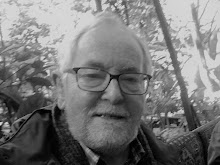The Holy Land - Part 2 (see first instalment below)
This was my first visit to Israel/Palestine. Cost had been
one impediment previously. But almost more than that, I was hesitant for two
reasons – one, that I might find the experience disappointing, and also (increasingly)
a real concern about the political situation and the oppression of the
Palestinian people.
The second concern remains, but Geoffrey ensured our visit
incorporated as much contact as possible with Palestinians, especially local
Christians. We spent two nights in a hotel in Jericho, and visited a school for
the blind near Bethlehem and a boy’s home at Bethany. We also had first-hand
experience of the separation wall, road checkpoints, and the frustration of
being denied access to Palestinian territory by young Israeli border- guards.
To return to my initial concern: in the event I was not
disappointed by any of the sites. I had expected to dislike the Church of the
Holy Sepulchre, having read many negative comments, Yes, it was overcrowded,
and the petty divisions among Christian denominations is shameful. And there is
almost nothing remaining of the original church or its subsequent rebuilds
before the 17th century. And
yet – it’s a place where Christian
prayer and worship have been offered for nearly two millennia. Much love and
devotion has been poured out by countless pilgrims. And there is something
moving about the groups of Nigerian, Korean, Brazilian, American, French,
British and other pilgrims filling the place. It’s a foretaste of that heavenly
Jerusalem, where will gather “saints from every tribe and language and
people and nation.”
And there were surprises. I had not expected Qumran to
have such a numinous atmosphere; it’s a lonely place on the edge of the Dead
Sea, leading into the Judean wilderness. But it’s not barren or threatening,
but rather charged with the grandeur of God and resonant with the hope and
expectation of the community that gathered there, away from the corruptions of
urban life. And there were other places where the presence of God was almost
tangible; like the ancient monastery, or rather laura (for hermits), of Mar Saba, also in the wilderness. Here
lived and wrote the great St John of Damascus – author of ‘The Day of
Resurrection! Earth tell it out abroad’, and the story of Barlaam and Joasaph (which I read in Greek in my first year at
Sussex).
And time and again, although they may not have been ‘wow’
moments (I’m not very often subject to them anyway!), there were experiences of
convergence and connection. The ruins of 1st century Capernaum with
its synagogue and homes echoed with Jesus teaching and healings: the man
lowered through the roof, Jairus’ daughter and the woman with the haemorrhage.
All around the Sea of Galilee we were reminded implicitly that the man whose
death and resurrection we had focussed on in Jerusalem had here spoken of and demonstrated the transforming
reality of the Kingdom of God.
Places dimly remembered from Old Testament readings
suddenly become ‘real’: Jericho, with its mighty walls; Samaria, where Ahab and
Jezebel ruled; Beth Shan, where Saul and Jonathan’s bodies were hung on the
city walls; Dan, where Jeroboam set up the golden calf to stop his people
creeping back to Jerusalem.
And we must not forget those places that recur in both
Testaments; like Jacob’s Well (in present day Nablus) – where the spirit of
martyrdom has survived, following the brutal murder a few years ago of the
Orthodox monk who looked after it, killed by an Israeli settler who resented
the presence of non-Jew. And we met an actual Samaritan priest, part of a tiny
community living on Mt Gerizim, who read only the Torah and offer sacrifice at
Passover.
Heaven touches earth in so many places and at all times –
but we need the particular and specific places and memories of history, to make
that truth alive and challenging.


0 Comments:
Post a Comment
Subscribe to Post Comments [Atom]
<< Home